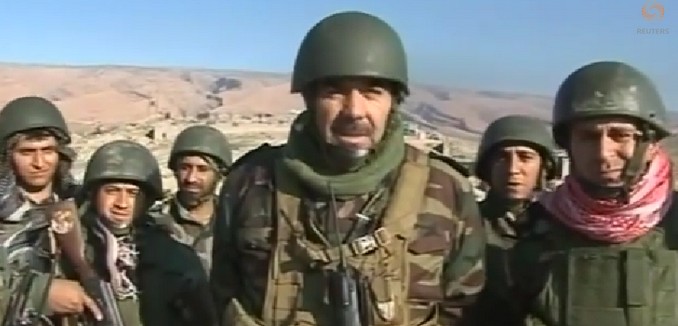With the assistance of American airstrikes, Kurdish Peshmerga fighters have pushed Islamic State of Iraq and Syria (ISIS) forces back in Sinjar, securing much of the city and freeing hundreds of Yazidis, The Wall Street Journal reported yesterday.
In one of the most successful counterattacks against the extremists since the group took over huge swaths of the country in June, about 1,500 Kurdish fighters known as Peshmerga, backed by Yazidi and Christian militia units, pushed into the city center on Sunday.
The coordinated assault came nearly a week after American aircraft launched 47 airstrikes against Islamic State targets in the area—one of the most concentrated strikes since the U.S. started attacking the militants in Iraq in August. Aircraft from the U.S.-led coalition continued to pound Islamic State positions throughout the past week.
According to the Journal, while the Kurds have retaken the northern part of Sinjar, they encountered resistance from ISIS as they moved towards the center of the city. The Peshmerga’s push has freed the majority of Yazidis who have been trapped on Sinjar mountain since August.
Reuters explains the significance of the Kurds capturing Sinjar:
Seizing the town would restore the majority of territory Iraq’s Kurds lost in the jihadist group’s surprise August offensive.
It would also give a huge strategic victory to both the Iraqi Kurds and the central government in Baghdad, as the Kurdish fighters could then cut the highway from Syria to Mosul, a vital supply line for Islamic State.
A more recent report in Al Arabiya described the ISIS resistance to the Kurdish advances as “fierce.”
In Can the West Win Without a Ground Game?, published in the September 2014 issue of The Tower Magazine, Jonathan Spyer described the collaboration that would be most effective in fighting ISIS:
This is what the proper coordination of allied states is supposed to look like. And it works in containing the conflict. To the east of the war’s arena is of course Iran. To its west is the Mediterranean Sea. To its north is a long, contiguous line of Kurdish control, shared between the Kurdish Regional Government of President Massoud Barzani in northern Iraq, as well as the three enclaves created by the PKK-linked Democratic Union Party (PYD) in northern Syria. The YPG militia, which is the military force in these enclaves, has fought the I.S. almost since its inception, and has largely prevailed in keeping the jihadis out of the Kurdish areas.
As part of a strategy of containment, the West should increase support for and recognition of both the Kurdish enclaves in the north of Syria and the Kurdish Regional Government itself. Both are elements capable of containing the spread of the jihadis from the north. It has become clear in recent days that the Pesh Merga, despite early setbacks, is a useful instrument in preventing the further advance westward of the Islamic State, and in so doing protecting the investment of international oil companies in the oil-rich parts of Iraq. The YPG militia, though poorly equipped, has also avoided major losses.
[Photo: Reuters / YouTube ]




